#hardanger fiddle
Text
i may be slightly biased but i truly believe there's no instrument that compares to the hardanger fiddle when it comes to evoking the most haunting little folksy feelings known to man
#hardanger fiddle#benedicte maurseth#norway#norwegian culture#norwegian folklore#trolls#swift-tricker's posts
69 notes
·
View notes
Text
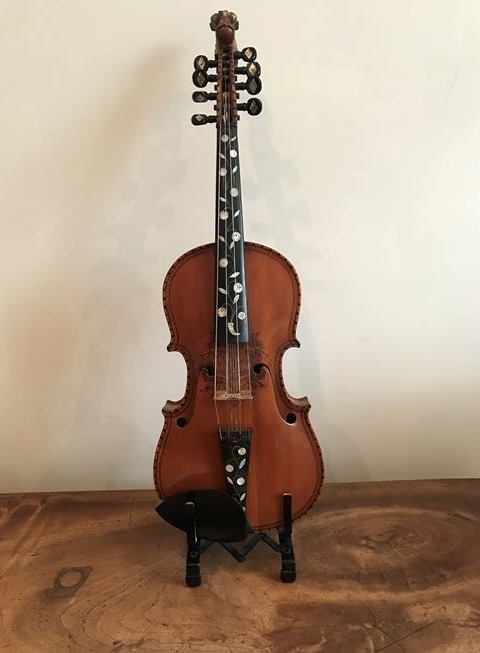
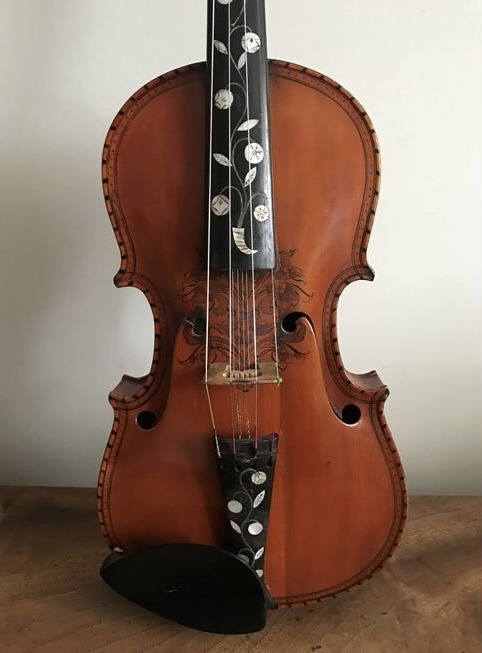
the “rohan fiddle.” hardanger fiddle used in the lord of the rings score
50 notes
·
View notes
Link
Recordning of the new piece “Fantasi” now available on NRK Radio.
0 notes
Text
The lady at the Apple Store just asked me if I’m Irish… something about the way I pronounce my ‘Ōs’..
I wish I had a bit of Irish blood, but the closest I can claim is Norse ancestry, for what that’s worth.
And I did try learning a bit of basic Irish some years ago but that didn’t last long.
In any case this was another instance in which people try to decipher my accent.
0 notes
Text
Before I post the short story I've been working on, I wanted to introduce some of Ace’s family, since they're going to be featured. I tried to edit it down to the important stuff but if anyone wants to know more just ask.

Solveig Liv Årud/Sylvia Hall, Ace's Mother
Ace's mom Solveig was born in Kapp along with her two brothers, One of her neighbors was a music teacher and taught her to play the Hardanger fiddle. When she was seventeen she became pregnant by one of her neighbor's students but was urged by her neighbor to never tell him or anyone else of the child's parentage. Having had Ace outside of wedlock Solveig faced a lot of social ostracisation. Her sister in law, who was deeply religious and judged Solveig for having a child without marrying. A rumor amongst the townspeople was that Ace's father was actually a fossegrim, that Solveig agreed to have a child with in exchange for teaching her to play the fiddle so well. (there is actually a lot to say on how this affected Ace and his view of himself but we don't have time to get into it rn). After a flood made her and her family homeless they emigrated to America in 1920 at the advice of some friends.
Once they arrived in New York Ace became very ill and bedridden causing them to be left behind as the rest of their family continued further up to Minnesota. While Ace was sick Solveig met and later fell in love with a Swedish immigrant named Eric Hall. She married Eric after knowing him for half a year. Solveig had kept Ace close all her life and not really letting her grow up or stand on her own. So he reacted badly to Solveig marrying. Being jealous and being unable to deal with not being her mothers center of attention, making him lash out. After an argument where Solveig slapped Ace for being disrespectful to her stepfather Ace ran away from home. Ace and Solveig have been estranged ever since, both being too stubborn to try to reconcile. After Solveig married Eric she tried very hard to adapt to American culture, Americanizing her name to Sylvia and trying her best to learn English and not speak with an accent. She currently has two children with Eric. Neither them nor Ace know of each other's existence.
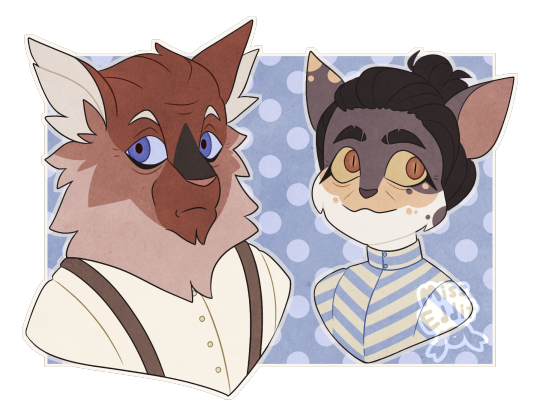
Torbjørn Olaug Årud and Lena Årud, Ace's Grandparents
Lena was born in Kapp and Torbjørn was born in the Lofoten area. He traveled down to Toten to live with a family friend after he became orphaned. He later met Lena and they eventually married. They later had 2 sons, the youngest of them dying as a child, five years later they had a daughter and three years after that another daughter they named Solveig. When Solveig became pregnant at seventeen they decided to support her and help her take care of their granddaughter. In the years immediately after Ace was born she and Solveig lived with them before moving into a smaller house on their property. By this time their oldest had married and taken over the main house on the farm and Torbjørn and Lena moved into another small house on the property.
They emigrated to America with the rest of their family in 1920 and went with the rest to Minnesota leaving Solveig and Ace behind. Lena later died in 1922 after becoming sick. Ace does not know this happened.
Info on the art:
Ace is supposed to be a tortoiseshell cat, witch is something that can be seen in her mother and grandmother as well. this is a reference to the fact that tortoiseshells are mostly female. (source)
Her grandfather is supposed to be a Norwegian forest cat.
The implement Solveig is holding is called a Lyster and it is used to fish. Lyster fishing was usually done when it was dark out, using the Lyster to stab the fish. it was banned in the 1860 but was most likely still practiced afterwards. Today it has become completely illegal. The fish in the bucket are trout, a fish that was commonly caught with a Lyster. (source) Here is a painting depicting it.
I apologize for any spelling mistakes or weird wording, i try my best to read though these before i post them but some mistakes often slip through.
Edit: fixed up a bunch of spelling mistakes and weird sentences. I promise im good at English😭
i think i should look into getting a dyslexia diagnosis
#lackadaisy#lackadaisy oc#art#my art#åse lore#Åse olaug Årud#Solveig Liv Årud/Sylvia Hall#Torbjørn Olaug Årud#Lena Årud#Årud family
22 notes
·
View notes
Text
god I love instruments that have that sound that I can only describe as crunchy. hurdy gurdy, mijwiz, uilleann pipes, jaw harp, morin khuur, hardanger fiddle, etc. sounds that make my brain go wheeeee yippeeeeee yayyyyy
14 notes
·
View notes
Text
Halbrand’s Theme: The key change
So. It seems to be common knowledge now that Halbrand’s theme is an inversion of Sauron’s theme. People talk about it all the time. What I haven’t seen, though, is people talking about the key change in Halbrand’s theme.
undefined
youtube
We start out in E minor, establishing the leitmotif on a Hardanger fiddle (a Nordic instrument, which symbolizes the Southlands.) New instruments are introduced, and after a while, we get the leitmotif again but with horns, symbolizing a more heroic or regal aspect of the character. When we reach the end, we get the leitmotif on a Nordic instrument again (pretty certain it’s a nyckelharpa). Seems reasonable, right? Start simple, go big, finish by going back to the start. Here’s the thing, though: we’re now in D minor.
Key changes have always been a thing. In pop music/modern music, you tend to go up a key in the last refrain to get some extra oomph at the end. In classical music, it’s more common to slip into the dominant key (five notes up), but you often go back to the original key again for the ending. So, why am I writing this, if key changes aren’t that big of a deal?
Halbrand’s theme goes down a key, and it doesn’t go back. When you look at it from a musicology point of view, it’s just... strange. Why go from E minor to D minor? Why end in D minor? When I realized this, I was just, “Where are we going, Bear? Why are we going down, Bear?”
My first thought was that it could symbolize Halbrand’s inevitable descent. He starts out as a heroic figure (fiddle -> horns), but he will fall from grace (horns -> nyckelharpa in a lower key). This could be the case, but I also realized that there could be a second reason to this.
undefined
youtube
Sauron’s theme is mostly atonal. The melody doesn’t follow a key, but the strings and percussion that keep the uncomfortably inconsistent rhythm going are repeating a Db (or C#, depending on what you want to call it) over and over again. So... half a note down from D minor.
Is that where you were taking us, Bear? Is that why Halbrand’s theme is suddenly descending in that highly nontraditional key change? Is it to symbolize Halbrand’s fall from grace in general, or did you intentionally lead us to Sauron?
Anyway, Halbrand’s theme has a weird key change. I have no further conclusions. Thank you and you’re welcome, I guess.
¯\_(ツ)_/¯
#halbrand#rings of power#the rings of power#trop#sauron#music#musicology#bear mccreary#meta#yes i have a thing for music and yes i have a minor in musicology and i am not afraid to use it for nonsense like this#Youtube
99 notes
·
View notes
Note
hi i was wondering if u could make an violin id pack !
so sorry if ur req are closed 😭

violin id pack


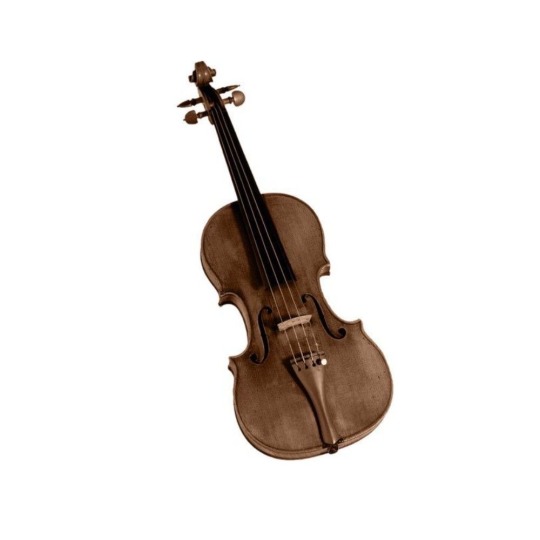

names : violin( o ) / violín , violon( e ) , baroque , aria , viola , cello , catgut , nylon , baritone , alto , stroh , tenor , soprano , treble , tempo , fidel , fiddle , lira / lyra , braccio , vielle , viuola , rebec( ca ) , bridge , sonata , hardanger , pocket , pochette , octet , mezzo , contrabrass , brass , chordophone , col , legno , battuto , bow( ette / ie ) , tune( tte / sse ) , vyollon , vibrato
pronouns : tu / tune , tune / tunes , harmony / harmonies , bow / bows , vio / violin , violin / violins , alto / altos , tempo / tempos , melo / melody , melody / melodies , pocket / pockets , nylon / nylons , stri / string , string / strings , spruce / spruces , wood / woods , pitch / pitches , steel / steels , node / nodes , peg / pegs , music / musics , chord / chords , hy / hymn
hai anon ! ! my requests were closed ( /nm ) but i had wanted to do something like this for a while :3 i hope this is okay !


#♥︎ we are now on the record .#♡ how do you plead ?#mogai community#mogai blog#mogai safe#mogai friendly#mogai#pronoun ideas#pronoun list#pronoun suggestions#pronoun suggestion#pronouns#name ideas#name suggestion#names#name suggestions#name list#xenopronoun list#xenopronoun suggestion#xenopronoun suggestions#xenoprns#xenopronouns#neoprns#neopronoun suggestion#neopronoun suggestions#neopronoun ideas#neopronoun list#neopronouns#id pack#violins
18 notes
·
View notes
Text
Reading Bear McCreary talk about how he composed the musical themes for The Rings of Power is eye-opening, but this sequence about Halbrand's theme stuck out:
With other outlier characters, such as Galadriel, Elrond, Durin, and Nori, I strove to write a separate theme, distinct from their cultural theme. However, in the case of Halbrand, I chose not to, instead allowing his personal theme and the theme for his culture to be one and the same. This shared theme implies he is a ‘head of state’ character, like King Durin, or Sadoc Burrows, supporting the revelation that Halbrand might be descended from a line of kings. This story thread will be teased in this episode, and made clear in the next.
The ragged band of survivors is attacked by a sea serpent, referred to by one as “The Worm.” This challenging sequence was my first full-length action scene in the show, and I spent the better part of a week on it, crafting a furious 3/4 horror ostinato, driven by snap pizzicatos in the strings, searing brass, blasting choral clusters, and ripping woodwinds. My favorite moments in the sequence were when Halbrand struggles to separate his half of the raft, and then the climactic moments when Galadriel swims away, both of which supported the action and also felt like the classic, old school Hollywood adventure scores I grew up with.
I was exhausted when I was done writing this sequence, which only added up to about two minutes of action. However, I had set the template for my desired level of complexity and layering in action cues for The Rings of Power, and my fate had been sealed. This was by no means the largest action scene in the show. Quite the contrary. I knew that in the next episode, I faced a lengthy battle with Orcs and that in episode six I would score a battle spanning the majority of the episode. Given how much energy I just expended scoring the worm sequence, I was nervous about how I could sustain my creative, mental, and physical energy over the next six months. Still, now was not the time to look ahead. For now, I refocused my energy into finishing “Adrit.”
After the sea serpent attack, Galadriel and Halbrand alone survive, clinging to a pitiful raft. Galadriel is intrigued by his revelation that he was chased from his homeland by her sworn enemies, the Orcs. The musical connection between Halbrand and the Southlands is made explicitly clear later in the episode, in the moment when Galadriel asks him if he will tell her where the enemy is. When at last, he responds, “The Southlands,” this shared musical theme for his character, his land, and his people, bursts on to the soundtrack. As they did with the Southlands Theme, Erik Rydvall’s nyckelharpa and Olav Luksengård Mjelva’s Hardanger fiddle bring their signature sound to the Halbrand Theme.
In one of the episode’s most memorable moments, Galadriel and Halbrand are caught in a terrible storm in the Sundering Seas. Galadriel, knocked unconscious, falls into the sea. As she sinks to a watery grave, soprano Sladja Raicevic sings a haunting rendition of Galadriel’s Theme. When Halbrand dives in to rescue her, the Southlands Theme resonates. The instrumentation sits atop a lush new harmonic chord progression, with strings and regal brass. Thus, musically, the audience senses bravery and nobility beneath Halbrand’s rough exterior. This richer variation will evolve as the audience learns more about the people of The Southlands, and Halbrand himself.
source (x)
But reading, "When Halbrand dives in to rescue her, the Southlands Theme resonates. The instrumentation sits atop a lush new harmonic chord progression, with strings and regal brass. Thus, musically, the audience senses bravery and nobility beneath Halbrand’s rough exterior."
The musical composer, admitting Halbrand's rescue of Galadriel was based in bravery and nobility and not self-service, I just . . .
Bless you, sir, for your good service.
#saurondriel#sauron x galadriel#galadriel x sauron#haladriel#halbrand x galadriel#galadriel x halbrand#the rings of power#rings of power#trop
93 notes
·
View notes
Text
Mairon - Aulë’s Maia
Halbrand - the Southlander
Sauron - the Dark Lord
People, HEEEELP!
What is the instrument at the beginning of Halbrand’s theme? I’m stoopyd 😭
And I assume the melody line is played with a hardanger fiddle... right? 😅
31 notes
·
View notes
Text
Daily Instrument — Hardanger Fiddle
The hardanger fiddle, or hardingfele, is a Norwegian bowed string instrument. The hardanger fiddle has 4 playing strings and 4 sympathetic strings (strings that add to the richness of the sound). The instrument looks similar to a violin, with a similar sound box shape, as well as f holes and a fingerboard. However it is highly decorated with an inlay of bone and pearl, and its head is the shape of either an animal head (typically a dragon or lion) or a woman’s head. The strings of a hardanger fiddle's strings are much more flat than a violin, allowing easier playability of double stops

youtube
#hardingfele#hardinger fiddle#music#instrument#instruments#musical instruments#folk instruments#folk music#Youtube
4 notes
·
View notes
Text
Love the very quiet hardanger fiddle/nyckelharpa at 22:56 in episode 3. If you know what to listen for, you know it's Sylvie just a moment before she's revealed!
4 notes
·
View notes
Note
Hello there! I hope this is okay to ask as I don’t know if this is exactly in your wheelhouse, but I’ve been trying to do some research for a while now on hardanger fiddles and their place in folklore/folk practices and beliefs, and I wondered if you’d have any information you could point me to about it or books to recommend? I’ve come across some bits of information and leads but I don’t know how reliable they are. I know this isn’t really heathenry-related and something more recent, so please feel free to ignore! Thank you though for any help you can provide!
I mostly know Icelandic folklore, and there isn't a whole lot about fiddles there. I don't know if there's anything there about hardangers in particular, and fiddles in general weren't very common in Iceland; a few were imported in the 19th century and it's said that a handful of Icelanders were able to make their own, and it supposedly had a reputation for attracting huldufólk.
I'm not sure what languages you're able to read, or your tolerance for retyping things into Google translate. If you're sticking with English, the book Scandinavian Folk Belief and Legend, edited by Reimund Kvideland and Henning K. Sehmsdorf, has a bunch of stories about fiddles and water spirits (nøkk/näck, fossegrim), and then a little bit about fiddles and the devil, all with citations. It's not hard to find a PDF of this book.
54.14 "They Danced themselves to Death":
Finally a minister heard about the dancing on the mountain, and
when he commanded the fiddler to stop, the man had to obey. But the folks who had followed the minister saw that it was Old Nick himself who sat there and played. He used his ass as a fiddle and worked it with the bow.
If you're able to read Scandinavian, the book -og fela ho lét. Norsk spelemannstradisjon by Arne Bjørndal and Brynjulf Alver is cited frequently by the above. It's available to borrow one hour at a time on archive.org. Studier i svensk folklore by Tobias Norlind is also available online, and the second volume of the Atlas of Swedish Folk Culture is available to download here.
The Swedish magical tradition includes spells to cause someone's fiddle strings to break; some of these can be found in Svartkonstrböcker ed/trans by Thomas K. Johnson.
9 notes
·
View notes
Photo
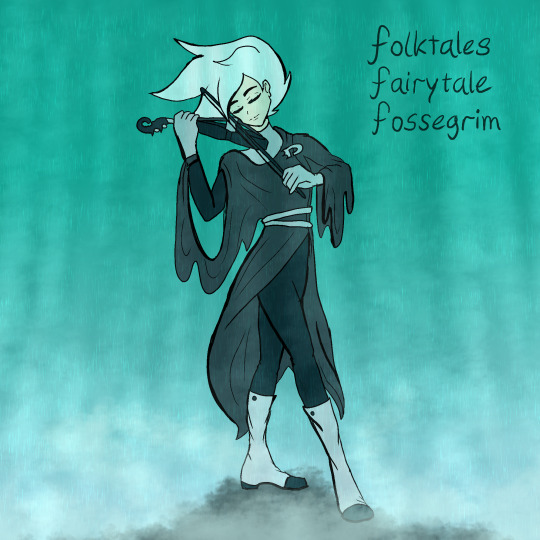
I listen to music while I worked: https://youtu.be/edzt82nC45k
Fossegrim, also known simply as the grim (Norwegian) or Strömkarlen (Swedish), is a water spirit or troll in Scandinavian folklore. Fossegrim plays the fiddle, especially the Hardanger fiddle.
4 notes
·
View notes
Audio
Ben Morris - Pocket Guides - folk + big band (and some King Crimson sounds in “Edvard” - as heard on djPeter’s show on WVUD last night)
Writing for his large, uniquely-voiced ensemble, and with Influences ranging from traditional Norwegian folk music, modern jazz, and contemporary classical music, composer/pianist Ben Morris' dynamic debut surprises and captivates. With his core group—Zosha Warpeha on Norwegian Hardanger fiddle and violin, Juan Olivares on clarinet, Dan Montgomery on bass, Evan Hyde on drums, and Ben on piano—he was invited to premier four original pieces at the Newport Jazz Festival in 2019, setting in motion the inspiration to expand the ensemble & compositions to create "Pocket Guides." With visions of bustling foreign cities, Norse mythology, tundra and waterways, Morris's music is cinematic, surprising and visceral, the rich textures reflecting his experiences living and studying in Norway, Korea, Florida, Texas, New Jersey, and now Colorado.
David Bernot — tenor, alto, and soprano saxophones, flute
Juan Gabriel Olivares — clarinet and bass clarinet
Derek Ganong — trumpet and flugelhorn
Magnus Murphy Joelson — trombone
Jack Bogard — violin and mandolin
Zosha Warpeha — hardanger fiddle and violin
Joy Adams — cello
Jonah Udall — guitars
Ben Morris — piano and melodica
Dan Montgomery — bass
Evan Hyde — drums
Sam Gautier — percussion
John Boggs — voice (4)
Composed, arranged, and produced by Ben Morris (ASCAP)
“Bubble in a River” text by E.H. Gombrich (1909-2001)
Front cover art by Ryan Schröder
Cover design and layout by John Bishop
Released on OA2/Origin Records
4 notes
·
View notes
Text
i would really like a fiddle, ideally like, a Hardanger fiddle but, a fiddle in general would be so fun lmao, not that i can actually play it :'d
1 note
·
View note